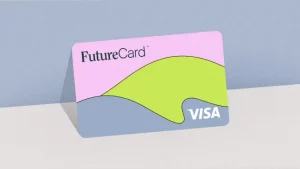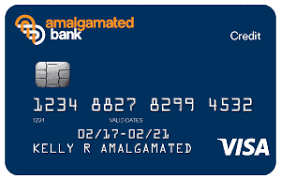Despite a lot of marketing hype, authentically green credit cards can be tough to come by. Here are 4 cards that actually walk the walk when it comes to sustainability.
Table of Contents
The greenest credit card is the one you don’t use, given that excessive consumption is one of the biggest drivers of climate change.
Of course, unless you live in rather unusual circumstances, chances are you’re going to need to pay for something on a credit card at some point. And when that happens, why not make the purchase itself a bit more sustainable?
By now, it’s pretty common knowledge that most major banks fund the fossil fuel industry. So, even when they offer a so-called eco-friendly credit card, this amounts to little more than greenwashing. A bank’s investments in extractive, polluting, unsustainable industries far outweigh the impact of consumer purchases using their ‘green’ credit card. Where your savings lie can have a much bigger effect on your carbon footprint than what you buy day to day.
This is why you won’t find ‘affinity’ type cards on our list (think REI’s card with U.S. Bank or the World Wildlife Fund’s card with Bank of America). Sure, these cards lead to donations to sustainable organizations, but the banks issuing them are also funding business working against those sustainable organizations and to a far greater extent.
How do genuinely green credit cards work, then? Usually, these cards operate in one of three ways:
- They’re issued by a banking institution that funds green energy and sustainable initiatives (and doesn’t fund fossil fuels). Examples of this approach include Amalgamated Bank and TCM Bank (which issues the Green America Visa).
- Offsetting carbon emissions associated with your purchases, usually through tree planting, although it can take 18 months or so from purchase to planting in some cases. For example, the Aspiration Zero card plants a tree for every purchase over $1.50 and more if you select certain options.
- Promoting behavior change, i.e., getting consumers to switch to more sustainable products. For example, FutureCard offers up to 6% cash back on purchases from more sustainable brands, helping to cut your carbon footprint at its root.
It’s worth noting, too, that if you’re still paying off your credit card using a checking and savings account with a major bank, your money is still funding the fossil fuel industry. Decarbonizing your financial footprint also means switching to a more sustainable, eco-friendly bank!
Free eBook: Simple Steps to a Greener Home
Concerned about climate change? Learn actionable tips for making each room in your home greener.
"*" indicates required fields

The best green credit cards: our top picks
Eco-friendly credit cards aren’t going to solve climate change, but they can help minimize the impact of everyday purchases and even help us shift our spending habits to be more environmentally friendly.
Here are some of the best eco-friendly credit cards, all designed to help us spend money without it being at the expense of the planet.

Aspiration Zero
Annual fee: $60 (suggested)
Highlights: Aspiration is a B Corp and 1% for the Planet member, offers a Pay What is Fair fee model and helps offset your carbon emissions with every purchase.
Easy to use, eco-friendly credit card available in the US
Aspiration offers other eco-friendly banking services
One tree planted for every $1.50 purchase
Cash back can be split as a credit or more trees planted
B Corp and 1% for the Planet member
Bank doesn’t fund fossil fuel industry
Pay What is Fair fee model (offers monthly fee flexibility)
Default account options let cardholders plant the change for more climate impact
No bill autopay option
Payment is due on the 28th of each month with no option to change
Default rounding up may catch out some consumers
The Aspiration Zero card makes it easy to offset the carbon emissions associated with everyday purchases. For all purchases over $1.50, Aspiration plants a tree in your name through the Arbor Day Foundation, One Tree Planted, and the Eden Project. By default, Aspiration will “Plant Your change,” meaning it rounds up your purchase to the next whole dollar and plants a second tree with the difference. You can opt out of this program at any time.
Cardholders who plant 60 or more trees in a month are considered “carbon zero” by Aspiration (based on the average number of trees Aspiration estimates are needed to offset the average American’s carbon footprint). Every month you get to “carbon zero,” you can earn up to 1% cash back on that month’s purchases (standard cash back is 0.5%). You can then choose to have this applied as a statement credit or use your rewards to plant trees. By default, half of the cash back is applied as a credit and half is used to plant trees.
Aspiration has a suggested annual fee of $60 for its credit card. This is a little lower than most credit cards and is also flexible. In fact, Aspiration’s entire fee model is based on a Pay What is Fair approach where each customer chooses how much to pay for using Aspiration’s services. You can set this fee once and then forget about it or you can change the fee amount monthly, depending on how much you used the bank’s services.
As an example, you might not use your credit card one month and choose to pay nothing in fees to Aspiration. The next month, you may choose to pay $100 in fees because you used the credit card a lot and also used the bank’s investment management services, wire transfers and so forth. Aspiration does charge a flat fee for things like wire transfers, but this is always at cost to the bank, meaning it isn’t making money on those transactions unless you Pay What is Fair on top of the basic fee. Aspiration donates 10% of those additional fees to environmental causes.
As well as making it easier to offset spending-related carbon emissions, the Aspiration Zero card is itself more eco-friendly. Like some other ‘green’ credit cards, the Zero is made with mostly biodegradable plant-based materials instead of petroleum-based plastic. Specifically, the Zero is made with 84% corn-based poly lactic acid (PLA).
About Aspiration
As a financial institution, Aspiration doesn’t invest in the fossil fuel industry and instead uses your credit card fees and other profits to fund projects that tackle climate change. This is in stark contrast to many larger banks that offer a ‘green’ credit card but continue to invest in fossil fuels and fund politicians and lobbying groups that fight against climate action.
Aspiration claims that for every $1,000 you transfer to an Aspiration savings account from a big bank, this is the equivalent of up to 6,000 fewer miles driven by the average car. In fact, Aspiration automatically calculates the carbon emissions associated with every gas purchase you make with its debit card, then offsets that amount at no cost to you.
Aspiration is currently offering a $300 bonus for cardholders who spend $3,000 in their first three months (terms and conditions apply, naturally).
Aspiration is a signatory to the Crypto Climate Accord, Project Drawdown, 1t.org, and the UN Decade on Ecosystem Restoration. In August 2022, Aspiration launched the Carbon Opportunities Fund in partnership with The International Finance Corporation, Cultivo, and Chia Network. This global investment platform will raise private capital to source, tokenize and sell high-quality, verified carbon credits. Essentially, it’s a way to kickstart the use of blockchain technology to source credible carbon offsets.
Free eBook: Simple Steps to a Greener Home
Concerned about climate change? Learn actionable tips for making each room in your home greener.
"*" indicates required fields


FutureCard Visa
Highlights: A green rewards charge card that works like a Visa but without impact on your credit score. Up to 6% cash back on some of our favorite sustainable brands!
No annual fee and no credit check
No foreign transaction fees
Immediate cash back reward
No effect on credit score
1% cash back as a base rate
5% cash back on more sustainable purchases (FutureGreen)
6% cash back on purchases with Future Partners!
FutureScore app tracks the carbon footprint associated with your spending habits
Digital card only (no physical credit card)
Not a credit card (you have to link it to a debit account to use the card)
If you want a Visa card that doesn’t affect your credit score and makes you feel extra good about using your EV or being vegan, the FutureCard Visa is for you. This is a green rewards charge card, meaning it isn’t technically a credit card. Instead, you add money to your FutureCard and use the balance to pay for goods wherever Visa is accepted.
Impressively, this charge card grants 1% cash back on everything, 5% cash back on more sustainable purchases, and 6% cash back on purchases from carefully chosen Future Partners. This includes things like shopping at online secondhand clothing and furniture stores, buying plant-based meat and dairy alternatives, buying a bike or related gear, and using public transit (BART, Amtrak, and bike and car sharing!).
Why we like FutureCard
So far, FutureCard has added more than 50,000 places to its list of sustainable partners, making it easy to get cash back on a whole slew of things you’d buy anyway. The company put this list together with the help of climate researchers and used life cycle sustainability assessments (LCSA) to create an algorithm that measures life cycle carbon emissions for products. The algorithm can even differentiate between a brand’s products, working out which is more sustainable.
We also love that FutureCard comes with the FutureScore app, which helps you track your carbon footprint linked to what you buy. Instead of planting trees to offset your standard spending habits, FutureCard helps motivate more sustainable purchases, so you reduce your carbon footprint at the outset.
Use FutureCard when buying some of our favorite sustainable brands, including Reformation, Patagonia, and at EarthHero. If you’re already thrifty about your clothing, use FutureCard for your Poshmark, thredUp, Depop, and Rent the Runway purchases and at other online thrift stores, including Goodwill online!
Note that FutureCard is entirely digital, meaning there’s no plastic credit card to keep track of. The card is issued by Piermont Bank pursuant to a license from Visa U.S.A. Inc.

Amalgamated Bank
Highlight: Ethical bank and B Corp with a long history of supporting social, racial, and environmental causes. Fossil fuel-free financial institution!
No annual fee on its Maximum Rewards® World Mastercard®
Low, $35 fee on its Secured Mastercard
Cash back of up to 1.5%
B Corp with a fossil fuel-free policy
Global Alliance for Banking on Values (GBAV) member
Net-zero (possibly) and powered entirely by renewable energy
Supports worker rights, affordable housing, and other initiatives
Longstanding financial institution (nearly 100 years old!)
Doesn’t invest in funds that harm people or planet
Diverse leadership team
Offers a secured credit card option to help people build credit
No consumer-facing carbon offset programs or education
High APR for some cardholders
Balance transfer fees on some card accounts
The credit cards are still plastic
Amalgamated Bank offers two types of credit card and is a socially and environmentally responsible banking institution. Unlike with the Aspiration Zero card, you won’t see any tree planting or carbon offsets on your credit card statement from Amalgamated. Instead, all the good work is done behind the scenes, with the bank supporting charitable causes and operating in a fairer, more eco-friendly manner than most of its competitors.
The Maximum Rewards® World Mastercard® from Amalgamated has no annual fee and offers up to 1.5% cash back on purchases. Its Secured Mastercard is a good choice if you’re looking to build your credit score and credit history and struggle to get approved for a credit card elsewhere.
Free eBook: Simple Steps to a Greener Home
Concerned about climate change? Learn actionable tips for making each room in your home greener.
"*" indicates required fields

Why we like Amalgamated Bank
Amalgamated Bank’s mission is “to be America’s socially responsible bank,” with a company vision to use banking to further economic, social, racial, and environmental justice. No small feat!
The good news is that Amalgamated has a serious head start over newcomers to the sustainable banking sector. Amalgamated has been around for nearly a century (since 1923!), having been created initially to serve the needs of labor workers.
The bank has a racially diverse leadership team and the president and CEO is a woman of color. The Board of Directors and the Customer Leadership teams are also led by women and are racially diverse and made up of around 60% women.
In 2021, Amalgamated Bank was named by the Human Rights Campaign Corporate Equality Index as one of the best places to work. The bank is committed to making banking services more accessible and was the first bank to introduce unsecured personal loans and free checking accounts to working New Yorkers. It also created the first foreign-exchange transfer service to allow immigrants to send money to family overseas.
Amalgamated has set a goal of net zero emissions by 2045 (though it also claims to be net-zero already in some online marketing) and has a policy of not investing in fossil fuels. It is 100% powered by renewable energy and offers special lines of credit to homeowners wanting to install solar.

Green America VISA
Highlight: A no-frills credit card where every swipe supports the work of Green America to… make America greener. Only a tiny amount is donated, though.
No annual fee
A tiny amount of each transaction fee supports Green America’s work
Green America supports green businesses engaged in fair trade, clean energy, organic farming, etc.
Relatively low APR
Backed by TCM, a community banking service
24/7 customer service based in the U.S.
No details on how much Green America receives in donations but likely a fraction of a penny per transaction
No carbon offsets, carbon reports, or other sustainability information
The card is plastic
No cash back program
The Green America Rewards Platinum Visa® credit card supports Green America’s work in the areas of fair trade, green energy, organic farming, and other sustainability initiatives. There’s no annual fee for this credit card, you get 24/7 U.S.-based customer support, zero liability for fraudulent purchases, reward points, travel insurance when you pay for travel using your card, and other perks.
The APR is also relatively low on the Green America Visa, with a special introductory APR of )% for 12 months and then rates of 12.24% to 22.24% currently.
This eco-friendly credit card is backed by TCM Bank, N.A., which has been providing credit card services to community banks since 1998. TCM was established by the Independent Community Bankers of America (ICBA), which acts as a voice for more than 7,000 community lenders and smaller financial institutions across the U.S.
The main downside of this card is that there’s little transparency over how much gets donated to Green America. Chances are, though, that this is just a fraction of a penny per transaction. Visa gives a portion of the 2% transaction fee to One PacificCoast Bank, the issuer of the card, and the bank then donates a fraction of that to Green America. Frankly, if your current credit card gives you a decent amount of cash back on purchases, the most effective altruistic approach would be to just donate that cash back to Green America if you’re interested in supporting their work.
Why we like Green America
Green America engages in consumer education and helps businesses green their supply chains to help foster a greener economy. The organization runs a Center for Sustainability Solutions to make it easier for companies to make changes and become more sustainable.
By bringing consumers together, Green America has more power to drive change, as seen with campaigns to encourage Amazon to adopt more renewable energy and for CVS to ditch its long receipts. It helps consumers find green businesses through its Green America certification program which encompasses environmental and social responsibility.
Free eBook: Simple Steps to a Greener Home
Concerned about climate change? Learn actionable tips for making each room in your home greener.
"*" indicates required fields

Green credit cards FAQ
Using a more sustainable credit card is just one more way of reducing your environmental footprint and doing a bit better for people and planet. Another option is to stick with the credit card you currently have or get a conventional credit card with good cash back and rewards and then redirect those rewards to environmental charities. Some charities can, for instance, accept donated air miles. In most cases, though, your simplest option is to cash out your cash back each month or annually and make a tax deductible donation to your favorite green charity.